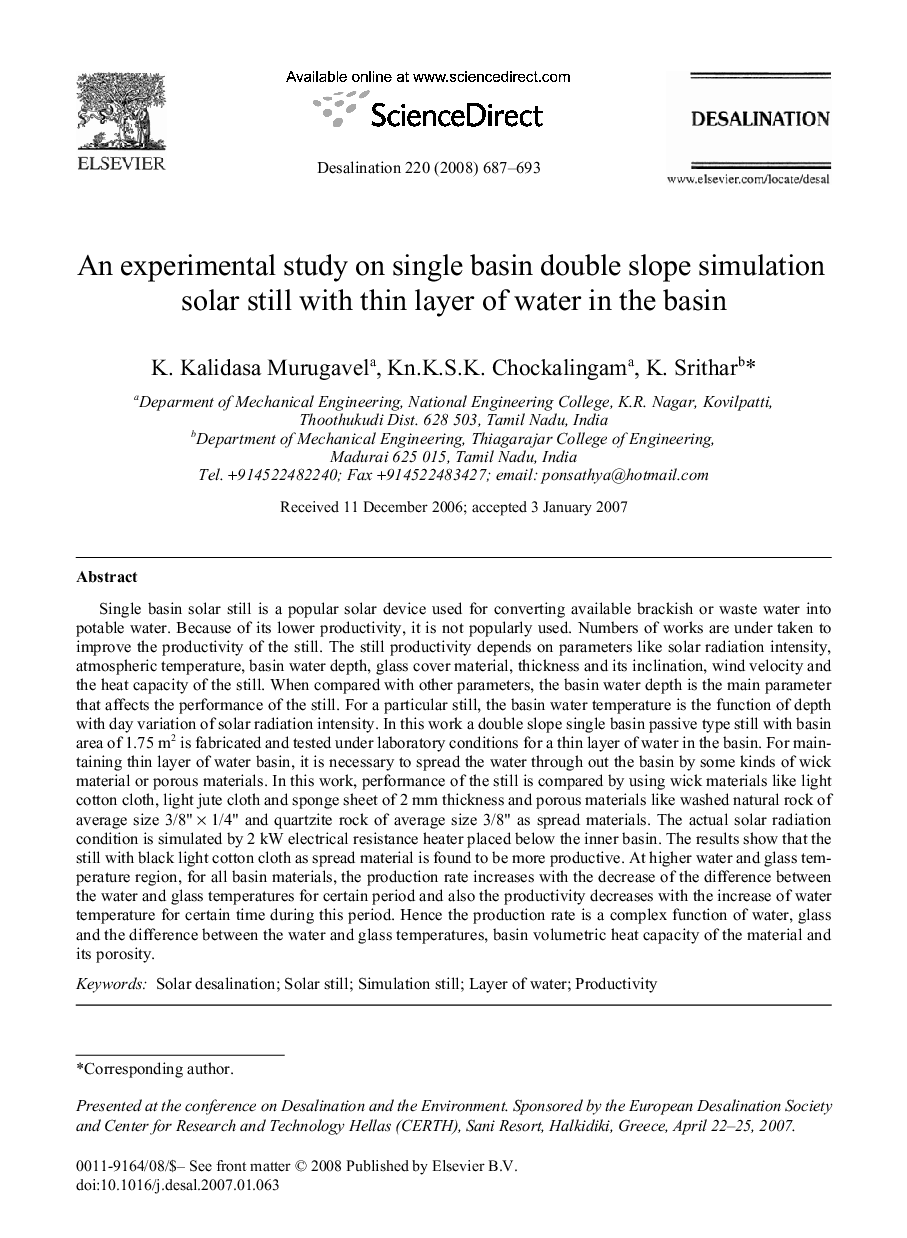| کد مقاله | کد نشریه | سال انتشار | مقاله انگلیسی | نسخه تمام متن |
|---|---|---|---|---|
| 627438 | 1455470 | 2008 | 7 صفحه PDF | دانلود رایگان |

Single basin solar still is a popular solar device used for converting available brackish or waste water into potable water. Because of its lower productivity, it is not popularly used. Numbers of works are under taken to improve the productivity of the still. The still productivity depends on parameters like solar radiation intensity, atmospheric temperature, basin water depth, glass cover material, thickness and its inclination, wind velocity and the heat capacity of the still. When compared with other parameters, the basin water depth is the main parameter that affects the performance of the still. For a particular still, the basin water temperature is the function of depth with day variation of solar radiation intensity. In this work a double slope single basin passive type still with basin area of 1.75 m2 is fabricated and tested under laboratory conditions for a thin layer of water in the basin. For maintaining thin layer of water basin, it is necessary to spread the water through out the basin by some kinds of wick material or porous materials. In this work, performance of the still is compared by using wick materials like light cotton cloth, light jute cloth and sponge sheet of 2 mm thickness and porous materials like washed natural rock of average size 3/8" × 1/4" and quartzite rock of average size 3/8" as spread materials. The actual solar radiation condition is simulated by 2 kW electrical resistance heater placed below the inner basin. The results show that the still with black light cotton cloth as spread material is found to be more productive. At higher water and glass temperature region, for all basin materials, the production rate increases with the decrease of the difference between the water and glass temperatures for certain period and also the productivity decreases with the increase of water temperature for certain time during this period. Hence the production rate is a complex function of water, glass and the difference between the water and glass temperatures, basin volumetric heat capacity of the material and its porosity.
Journal: Desalination - Volume 220, Issues 1–3, 1 March 2008, Pages 687-693